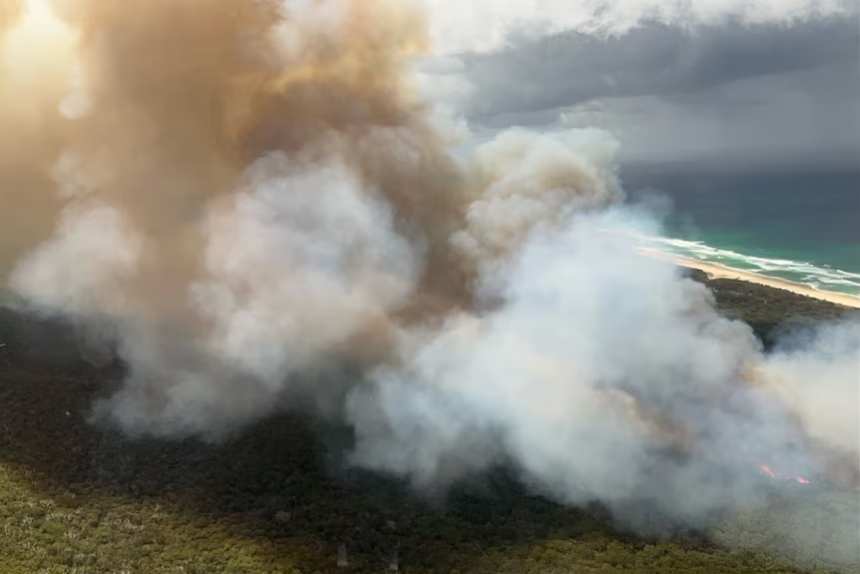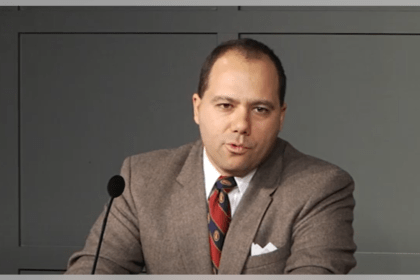Rising Threat of Bushfires: A Global Crisis
As Australia enters another bushfire season, the nation is once again reminded of the devastating impact of wildfires. Recent events, including the evacuation of campers from Moreton Island in Queensland and ongoing firefighting efforts in southern Tasmania, highlight the urgency of addressing this escalating crisis. With more than a dozen homes threatened on New South Wales’ North Coast, the situation is dire, and it’s only October.
A Global Perspective on Bushfire Frequency
Research from the University of Tasmania has unveiled alarming trends in bushfire occurrences worldwide. An analysis of 44 years of disaster data, focusing on approximately 250 significant wildfire events, reveals that 43% of these major disasters have occurred in the last decade alone. This surge in frequency is not just a local issue; it reflects a global pattern that has seen economic disasters quadruple and major fatality events triple since 1980.
Calum Cunningham, the lead author of the study, emphasized the gravity of these findings. “I hope that this analysis puts to bed the idea that maybe it’s not getting worse; it certainly is getting worse,” he stated. The data indicates that the economic toll from bushfires peaked in 2018, reaching approximately $28 billion (USD) globally.
The Economic Impact of Bushfires
The financial ramifications of bushfires extend far beyond immediate damage. Cunningham pointed out that direct costs are only a fraction of the overall economic impact, as they do not account for the indirect effects that ripple through economies during recovery efforts. The report highlights that half of all $43 billion fire events since 1980 occurred in the last decade, underscoring the urgent need for effective mitigation strategies.
The western United States, particularly areas like Los Angeles, has been notably affected. Cunningham noted that the economic impact of the LA fires is estimated at a staggering $104 billion. This figure illustrates the intersection of intense fire activity, populated areas, and valuable infrastructure, which creates a perfect storm for disaster.
Hotspots for Future Disasters
The researchers employed a statistical model to identify global hotspots for major bushfire disasters. Their findings indicate that coastal Southern Australia is at a particularly high risk. “It provides a tool that points to areas of the world that are most in need of mitigating fire,” Cunningham explained. This predictive capability is crucial for preparing communities that are vulnerable to bushfires.
Hobart, Tasmania, serves as a prime example of a location with significant risk. The city features an extensive wildland-urban interface, where homes are situated close to bushland filled with highly flammable vegetation. Cunningham warned that on days with adverse fire weather-characterized by heat, dryness, and wind-Hobart possesses all the necessary ingredients for a catastrophic event.
The Role of Climate Change
The increasing frequency and severity of bushfires can be attributed to climate change, which has intensified extreme weather conditions. The report indicates that half of all disasters struck during the most extreme weather conditions on record, which represent the worst 0.1% of days occurring only once every three years. Since 1980, severe fire weather and atmospheric dryness have more than doubled, while severe droughts have increased by 3.4 times.
Despite a significant increase in fire suppression spending-up 3.6 times in the U.S. to $4.4 billion (USD) by 2021-the frequency of economically disastrous wildfires has risen dramatically. This paradox raises questions about the effectiveness of current strategies and the need for a more comprehensive approach to fire management.
Preparing for the Future
Cunningham’s research underscores the importance of preparation in mitigating bushfire risks. He offers several practical tips for homeowners to reduce their vulnerability:
- Manage and Clean Up Bushfire Fuels: Regularly clear vegetation and debris from around homes.
- Create Defensible Space: Ensure there is a buffer zone around properties where vegetation does not touch buildings.
- Seal Vents and Remove Leaf Litter: Prevent embers from entering homes by sealing roof vents and keeping areas under decks clear.
- Develop a Fire Plan: Have a well-thought-out fire plan in place well before the fire season begins.
Conclusion
The rising threat of bushfires is a complex issue that demands immediate attention and action. As evidenced by recent research, the frequency and economic impact of these disasters are increasing at an alarming rate. Communities, particularly those in high-risk areas like Hobart and Los Angeles, must prioritize preparation and mitigation strategies to safeguard lives and property. The urgency of this situation cannot be overstated; as Cunningham aptly noted, “We’re not without tools at our disposal here, and preparation is probably the most important of these tools.”











